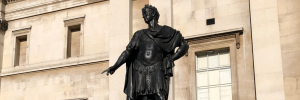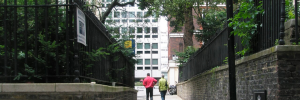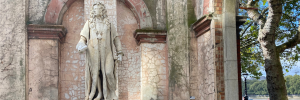On fashionable Jermyn Street, close to Piccadilly, is a plaque marking where Sir Isaac Newton lived in London. While living here Sir Isaac Newton was responsible for the hanging of at least 19 people. Newton is of course the famous physicist, mathematician and astronomer and his ideas are taught today even at primary school. Born in 1642 he grew up knowing the troubles of the English Civil War and ended up with the Stuarts as his patrons while President of the Royal Society.
Newton started work for the Royal Mint in 1696 and quickly became the Warden overseeing its operations. The Mint produced the coinage for the Kingdom and was in deep trouble. Up to 1 in 10 coins in circulation were forged and because even the official coins were so badly made and inconsistent in design, it was very hard to tell forgery from real. Also the value of the silver in the coins was worth more than the coin, so they were often “clipped” or simply melted down. Seemingly respectable goldsmiths frequently had a valuable sideline in the production of forged coins.
Newton with his passion for accuracy totally reformed the process for making coins, with refined weights and standards never seen before. He also supervised the tricky task of bringing Scottish coinage into line with English coinage, following the act of union in 1707 (although still try spending a Scottish bank note in a London pub!).
Fraud and counterfeiting were capital offences. Newton drew up a list of suspected criminals and helped to amass the evidence for their prosecution. If found guilty by a jury in a court of law they could be hung for treason.
One famous case was William Chaloner, a serial criminal from Warwickshire. Refining his forging skills in London he became so successful he could afford a large house in Knightsbridge, with all the trappings of respectability. He even brazenly offered to help the Mint to tackle counterfeiting.
But Newton, with the dogged nature that made him so successfully a mathematician, built his case against Chaloner. Chaloner, using his powerful connections at first, got released, but over the next year and a half Newton continued to build his case. On the 16th of March 1699, Chaloner was hung, having unsuccessfully first tried to claim to be mad and then begging for leniency from Newton and others.
For a brief period Newton was also the MP for Cambridge University. He is only recorded once speaking in the House of Commons, when he stated he was cold and asked someone to close the window.
This is part of my new tour – Monsters and Scientists of Mayfair and Soho – where we walk in the footsteps of other famous scientists and uncover the story of Mary Shelley’s Frankenstein. Tours bookable here!



